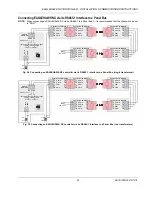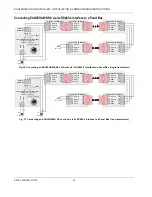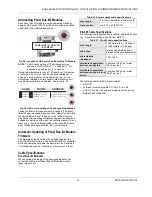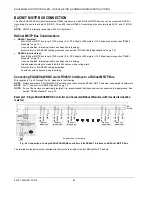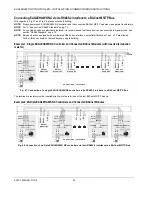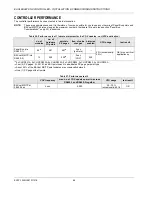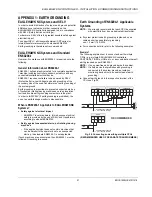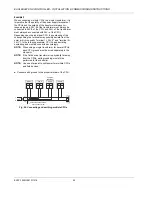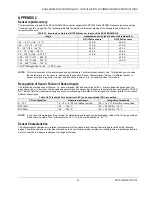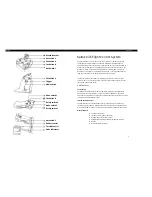
EAGLEHAWK NX CONTROLLER – INSTALLATION & COMMISSIONING INSTRUCTIONS
45
EN1Z-1039GE51 R1218
Connecting EAGLEHAWK NX via its RS485-2 Interface to a Modbus
With regards to Fig. 50, please note the following:
NOTE:
Always power each EAGLEHAWK NX controller and the connected Modbus slaves via separate transformers.
NOTE:
For "L," see section "RS485 Standard" on pg. 10.
NOTE:
If any of the devices are electrically isolated, it is recommended that those devices be connected to signal ground. See
section "RS485 Standard" on pg. 10.
NOTE:
Between devices equipped with non-isolated RS485 bus interfaces, potential differences of max. ±7 V are allowed.
Further, this bus should not extend beyond a single building.
Example: EAGLEHAWK NX Modbus Master Controller and Connected Modbus Slaves (with inserted
termination resistor)
1 2
24
V~
24
~
0
2930 31
GND-2
GND-2
+5V
RS485-2 (+) RS485-2 (-)
550 OHM
550 OHM
130 OHM
F1
230 V
24 V
R
T
Modbus
Module #2
RS
48
5
+
RS
48
5
-
GN
D
Modbus
Module #3
Modbus
Module #4
Modbus
Module #N-1
Modbus
Module #N
RS
48
5
+
RS
48
5
+
RS
48
5
+
RS
48
5
+
RS
48
5
-
RS
48
5
-
RS
48
5
-
RS
48
5
-
GN
D
GN
D
GN
D
GN
D
L
Modbus
Module #1
EN
D
BI
A
S
MID
NO EFFECT ON RS485-2
*CONNECT GND, IF AVAILABLE.
120 OHM
EAGLE-
HAWK NX
Fig. 50. Connection of an EAGLEHAWK NX Modbus master controller via its RS485-2 interface to a Modbus with slaves
The termination resistor must be inserted directly into the terminals of the last Modbus slave.
NOTE:
In this example, a maximum of one of the Modbus RTU slaves can be an EAGLEHAWK NX Modbus RTU slave –
which must then be positioned at the end of the Modbus (as "Modbus Module #N"); the insertion of the aforementioned
termination resistor is then unnecessary.



